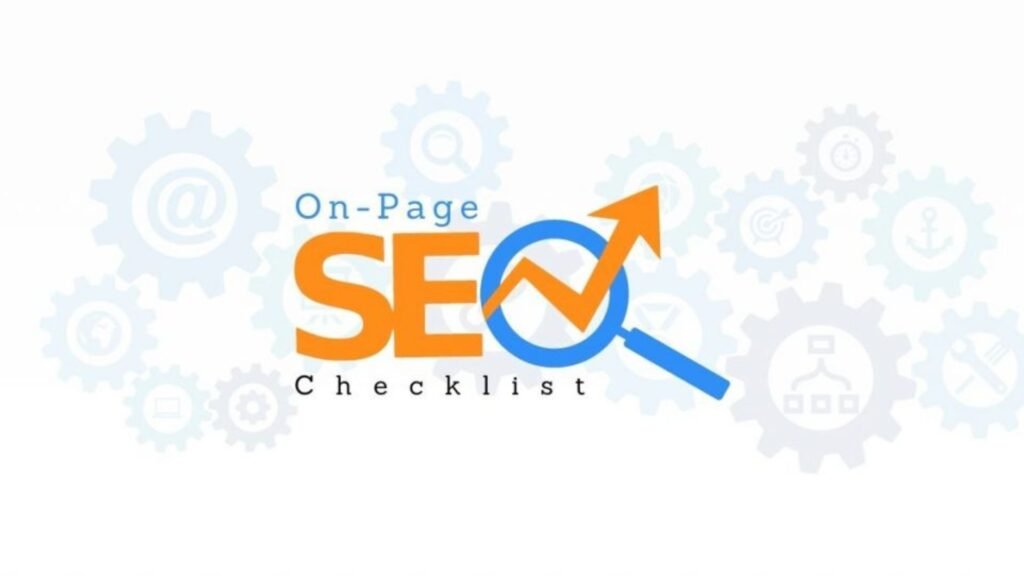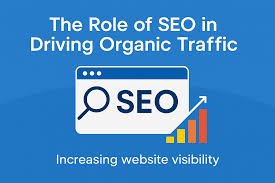On-page SEO is the foundation of any successful website. It ensures that search engines understand your content and rank it appropriately. Optimizing every page improves visibility, user experience, and ultimately, conversions. This checklist covers the key elements to focus on when optimizing your pages for search.

Optimize Your Title Tags
Title tags are one of the most important on-page SEO elements. Each page should have a unique title that includes your primary keyword naturally. Keep titles under 60 characters so they display correctly in search results. A clear, compelling title not only helps search engines but also encourages users to click.
Craft Engaging Meta Descriptions
Meta descriptions summarize your page for search engines and users. Include the main keyword and make it compelling, around 150–160 characters. While meta descriptions don’t directly impact rankings, they influence click-through rates, which can affect your page’s overall performance.
Use Header Tags Strategically
Organize content with H1, H2, and H3 tags. Your H1 should contain the main keyword and clearly define the topic. Use H2s and H3s to break content into sections, making it easier to read and scan. Headers also give search engines context about your page’s structure.
Include Target Keywords Naturally
Integrate your primary and secondary keywords naturally throughout the content. Avoid keyword stuffing, which can harm rankings. Use variations, synonyms, and related phrases to signal relevance to search engines while keeping the text readable for users.
Optimize Images and Alt Text
Images improve user experience and engagement but must be optimized. Use descriptive file names and compress images for fast loading. Include alt text with relevant keywords to help search engines understand the image content and improve accessibility.
Improve URL Structure
URLs should be short, descriptive, and include your primary keyword. Avoid long strings of numbers or irrelevant words. For example, use www.example.com/content-marketing-tips instead of www.example.com/post12345 Clean URLs improve both SEO and user trust.
Add Internal and External Links
Linking to other pages on your site (internal links) helps search engines crawl your site and keeps visitors engaged longer. Include external links to authoritative sources to boost credibility and provide additional value. A healthy mix improves SEO and enhances user experience.
Focus on Page Speed
Fast-loading pages are crucial for both SEO and user experience. Use tools like Google PageSpeed Insights to check your site’s speed. Optimize images, leverage browser caching, and minimize code to ensure pages load quickly. Slow pages can increase bounce rates and reduce rankings.
Ensure Mobile-Friendliness
Mobile-first indexing means Google primarily evaluates the mobile version of your site. Ensure your pages are responsive, easy to navigate on small screens, and display all content correctly. Mobile-friendly pages improve rankings and engagement.
Include Engaging and Valuable Content
High-quality content is the backbone of on-page SEO. Provide clear, useful, and original content that satisfies user intent. Incorporate visuals, bullet points, and examples to make it easier to read. Engaging content encourages longer sessions, shares, and backlinks.
Optimize for Featured Snippets
Featured snippets appear at the top of search results and can boost visibility. Format content with lists, tables, and Q&A sections to increase chances of being featured. Answer common questions directly and concisely to target snippet opportunities.
Use Schema Markup
Schema markup helps search engines understand your content better. Add structured data for reviews, events, products, and FAQs to improve search result appearance. Schema can lead to rich snippets, which increase click-through rates and visibility.
Conclusion
On-page SEO is essential for improving rankings, attracting traffic, and enhancing user experience. By following this checklist—optimizing titles, meta descriptions, headers, keywords, images, URLs, links, page speed, mobile-friendliness, content, featured snippets, and schema markup—you can ensure every page of your website is fully optimized for search. Consistent application of these strategies helps your site stay competitive in search results and provides a better experience for your visitors.











